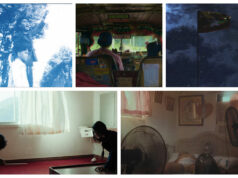I AM VERY grateful to have this regular column to cover my wine experiences (with occasional spirits, beers, and other alcoholic beverages too), my wine thoughts, and my travels, and 2019 was as exciting of a year as I ever had.
In the last year, I had a chance to return to Bordeaux after close to a decade of absence. I also continued my wine education on my 4th trip to the Piedmont region of Italy since 2013 — attending my 3rd Nebbiolo Prima in the picturesque town of Alba. The wine business in the Philippines is also on the upswing, with official import volume of wines (as our country really does not have the weather and four seasons to grow Vitis Vinifera grapes to make decent wines) close to doubling since 2010. This will be my first year-end review since 2014.
THE GRAND CRU BORDEAUX TOUR
A huge shout out to Yann Schyler and Charles Delamalle of Schroder & Schyler for arranging my incredible and dreamy itinerary last February. Among the renowned Grand Cru chateaux I fortunately visited early last year, were Chateau Margaux (Grand Cru Classe 1st growth), Chateau Leoville Las Cases (Grand Cru 2nd growth), Chateau Cos Estournel (Grand Cru 2nd growth), Chateau Cheval Blanc (Premier Grand Cru Classe A St.-Emilion), Chateau Angelus (Premier Grand Cru Classe A St.-Emilion), Chateau Kirwan (Grand Cru 3rd growth), Chateau Lagrange (Grand Cru 3rd growth), Chateau Palmer (Grand Cru 4th growth) and Chateau Fleur Cardinale (Grand Cru Classe St.-Emilion). This Bordeaux experience included tastings of wines from current vintage releases to as old as the 1945 vintage of Chateau Leoville Las Cases. The biggest takeaway from the visit is that Bordeaux wines, in particular the Grand Cru Classe wines, are thriving on amazing recent vintages with 2014, 2015, and 2016 all ranging in quality from superior to exceptional.
I learned so much on the trip talking to oenologist, winemakers, and even owners on the peculiarity of each vintage and the signature style of the individual chateaux. No books nor YouTube videos can substitute for the experiential aspect of being with the people of a chateau and drinking their wines in the comfort of their cellar. I will, however, continue to try to communicate these experiences as vividly as I can to my readers.
NEBBIOLO QUALITY SHINES ANEW
For a self-confessed Nebbioloholic (a phrase I coined for a Nebbiolo grape varietal wine fanatic…), the Nebbiolo Prima, which is an annual event previewing 100% Nebbiolo grape-made DOCG wines from Barolo, Barbaresco, and Roero regions, has always been a hedonistic endeavor. From Jan. 23 to 27 in 2019, I was back in Alba, Piedmont to join around 50 wine journalists from 25 countries, representing Europe, North America, South America, and Asia. I happened to be the lone participant from Southeast Asia. Being previewed were the DOCG wines of the Roero 2106 vintage, the Roero Riserva 2015 vintage, the Barbaresco 2016 vintage, the Barbaresco Riserva 2014 vintage, the Barolo 2015 vintage, and the Barolo Riserva 2013 vintage. Two noteworthy vintages were the 2015 Barolos and the 2016 Barbarescos. The 2015 vintage of Barolo is absolutely my favorite, not only among the previous Barolo vintages I previewed, but also from a few I tasted after their commercial release.
Even though 2015 started quite rough, as the Langhe in Piedmont experienced its hottest July since 1880, some positive fortuitous circumstances on weather did save the vines and helped push up the quality of the 2015. It was the windy conditions of July and August that gave the vines much needed relief from the heat. The higher sloped Barolo region benefited more from the winds in aiding the proper ripening of Nebbiolo. The wet winter at the start of the year with plenty of reservoir water also came in handy in combating the dry and hot summer. Nebbiolo was harvested during the last week of September, with yields from vineyards falling by as much as double digit percentages from normal yields. However, the concentrated quality from the low yield made the difference at the end, and it was reflected in my blind tasting of the 2015 Barolos.
The 2016 Barbarescos were equally impressive. That year, 2016, had some genuine vine growing concerns because of low temperatures or the “late cold” that caused some delay in the start of the vegetative cycle of the vines. But the low temperature and the subsequent rains provided the soil with the right amount of water for the physiological development of the Nebbiolo. There was also the high temperatures in August and September that helped immensely in developing the phenolic components of Nebbiolo. These 2016 Barbarescos are therefore well balanced, with good acid structure, lovely nose, and of great structure, but have slightly lower alcohol content. My full review of the specific Barolo 2015 and Barbaresco 2016 brands is available in my column online.
SOMETHING NEW TO DISCOVER
Last year I got a better introduction to wines from Thailand care of GranMonte and its winemaker and owner family member Visootha Lohitnavy. I was able to interview Visootha about the wine and vineyard scene in Thailand during a Thai-themed wine dinner at the Dusit Thani Hotel Makati.
I also got a chance to reacquaint myself with Greek wines, particularly the varietals Xinomavro and Assyrtiko because of the presence of Greek wineries Domaine Sigalas and Kir-Yianni during the 19th Grand Wine Experience.
And most recently, at a wine event in Singapore, I came across relatively unknown Italian varietals that could really get interesting in the near future — these are red varietals Nero d’Avola and Susmaniello, and white varietals Passerina and Fiano Minutolo
The only bummer in the past year was the constant threat of higher tax on wines. It never actually materialized, but it is, sadly, expected to happen in early 2020. I have been told of the final upward tax adjustment on wines in the Senate version, which will most likely be the one ratified into law.
For now, let us enjoy our wine in peace. Happy New Year to all!
Erratum: as pointed out by reader Arnold Oliva, in my last column on Prosecco I clumsily wrote that Veneto and Friuli Venezia Giulia regions are from northwest Italy, when these wine regions are in fact from NORTHEAST of Italy. Thank you Arnold for the correction.
The author is a member of the UK-based Circle of Wine Writers (CWW). For comments, inquiries, wine event coverage, wine consultancy and other wine related concerns, please e-mail him at protegeinc@yahoo.com.



